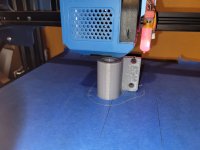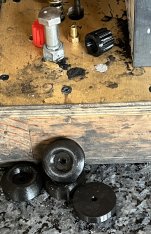I spent $3500 on my Raise3d E2 as my first printer and love it. You don't need to spend that much though.
In my opinion ABS is pretty much obsolete PETG is much easier to print, basically the same strength, and has better UV resistance. ABS has marginally higher temperature resistance, though I think high temperature PETG is available.
One underrated filament I'm messing with now is high durometer TPU. The impact resistance is great, cost isn't bad, UV resistance is great though certain colors will yellow, and supposedly it's one of the least flammable filaments but I haven't tested that. It should be more heat resistant than ABS, though I haven't tested that either.
PLA prints with a nice matte finish but I have no reason to use it since I get PETG cheaper and get equal quality, but glossy prints. I plan to order some matte PETG to try.
I don't really bother with carbon fiber reinforcement since I just don't need it. If I need strength I can just design the parts I make to use more material in that area. I do often print in 100% infill, which cheaper printers can have issues with. I also like to print at the max flow of my extruder. I have an RFQ in for a typhoon extruder to make parts much faster, but that's over $3k for the extruder alone.
I can list brands that I like for filament but I am omitting them as I want this to be general information on this particular post







